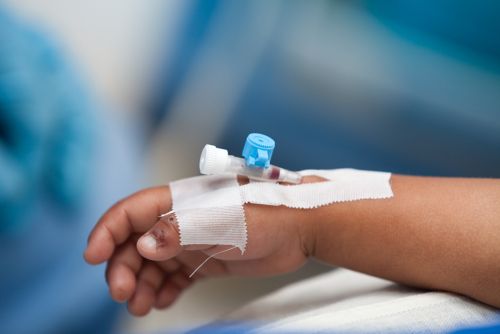Menu
Close
Back
Welcome to
Together is a new resource for anyone affected by pediatric cancer - patients and their parents, family members, and friends.
Learn MoreA peripheral intravenous line or catheter is a small, short tube placed into a vein through the skin using a needle. A peripheral IV is a way to take blood samples or give some medicines or fluids into a vein. Most of the time it is placed in the:
You might hear a peripheral IV called a PIV, peripheral intravenous line, or peripheral intravenous catheter.
The length of time the IV stays in depends on how well it works and how long your child needs it. Every child is different. Talk with your child’s doctor or nurse if you have questions.

A peripheral IV is a way to give medicine or fluid into a vein.
It is important that your child’s IV stays in place and is secure. Germs may get into the IV and cause an infection, or a blood clot may form and block the line.
While your child is in the hospital, your care team will do these things to keep the IV secure and check for infection and blood clots:
If your child goes home with an IV, you will learn how to care for the IV. Always follow the instructions given by the care team.
Always take steps to prevent infection. An infection can become life-threatening.
Check your child’s IV every 3–4 hours. Make sure you clean your hands well before checking the IV. Look for any problems listed below. These may be a sign of infection, blood clots, or problem with the line.
Call the clinic or hospital if you notice any of these problems:
Important: If you notice any of the problems listed above, call your child’s primary clinic or provider right away or go to your local emergency room. You do not want to wait too long and let problems get worse or become life-threatening. After hours or on the weekend, call the hospital and ask for the nursing coordinator or the doctor on call.
Fever and Signs of Infection in Childhood and Adolescent Cancer
If you have questions about how the medical staff maintains your child’s IV or how to maintain an IV at home, please ask your child’s doctor or nurse.
—
Reviewed: August 2022